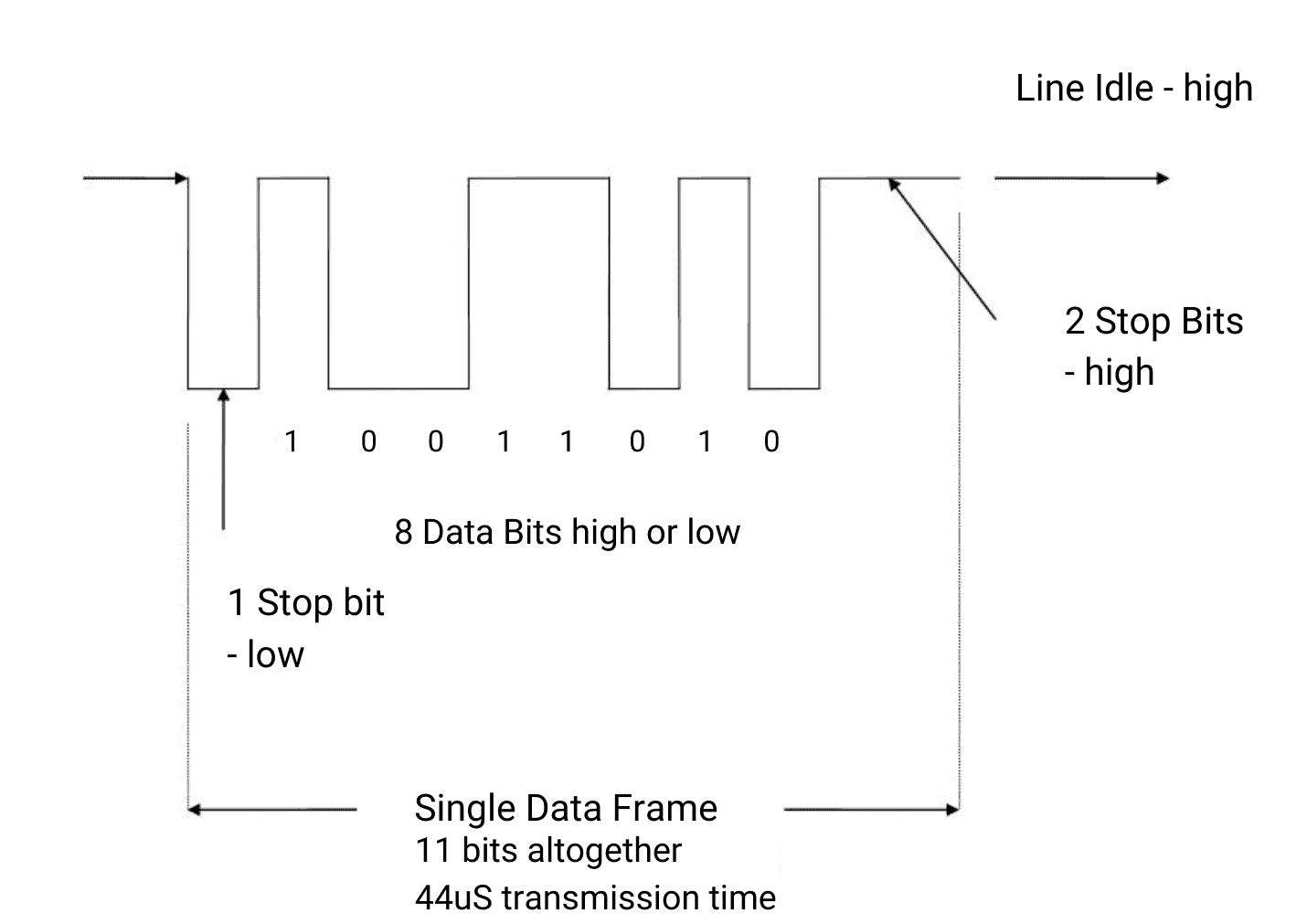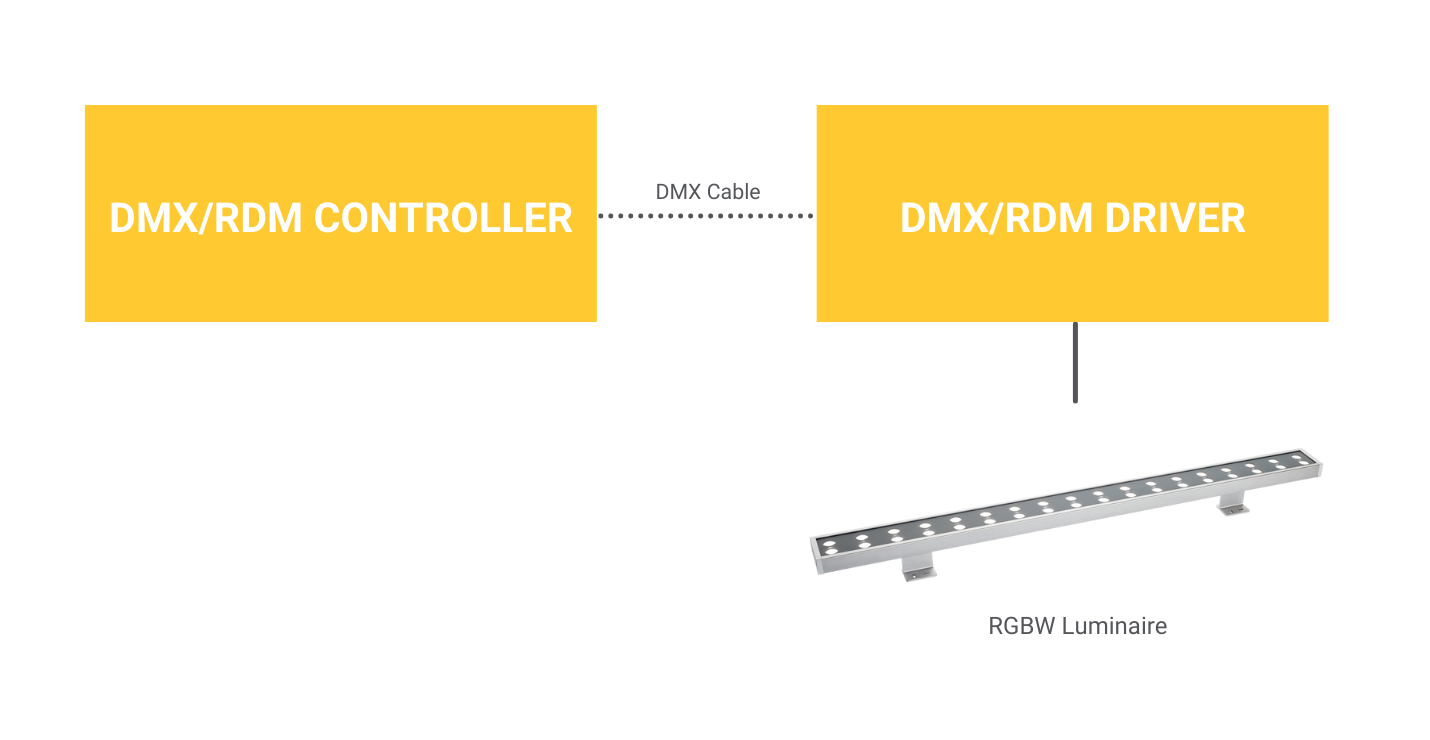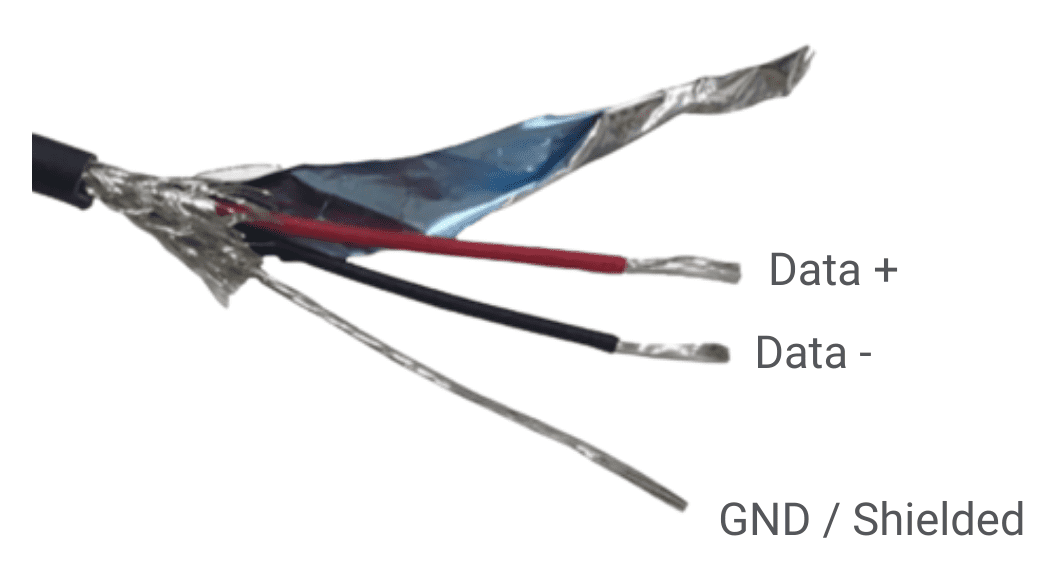DMX/RDM Introduction
What is DMX?

DMX SYSTEM Figure. 1
Originating the world of stage and performance lighting, and now widely adopted across architectural applications, DMX (Digital Multiplex) is an internationally recognised protocol used to control lighting. In accordance with ANSI and maintained by ESTA, it is not proprietary technology and therefore not limited to one manufacturer.
DMX512: ANSI E1.11 is a serial protocol, allowing you to connect the controller directly to the device you want to control. It is a protocol asynchronous serial communication based on the RS-485 protocol, operating at 250 kbps it can send information to up to 512 channels in a single DMX-512 channel with 1 byte
of data per channel.
An enhancement to DMX512 called RDM is also available in some ETC products for remote configuration of devices. Topology & Connectors Figure. 1
DMX DATA FRAME

What is RDM?

DMX/RDM SYSTEM
RDM : (Remote Device Management) ANSI E1.20 Remote Device Management offers an improvement to the DMX protocol by adding bidirectional communication between lighting controllers (or systems) and connected RDM compatible devices. This can be achieved using standard DMX512 cables, providing that all three cables are connected at the end. DMX512 typically only send commands from the controller to the source, RDM facilitates bidirectional communication which provides many advantages and is especially useful for address settings and other functions.
DMX/RDM Advantages

► Access to driver/controller address settings via 3 core data cable.
► The console can search the DMX Universe for all connected devices and then automatically patch address them.
► RDM devices can be firmware upgraded via the DMX512 signal.
► RDM devices can send status and fault information back to the console.
► Bidirectional communication enables easier integration of DMX installations with sophisticated ethernet protocols such as Art-Net or sACN.
DMX / no RDM Disadvantages
► No ability to set address or multiple values of driver/controller.
► Each luminaire must be physically accessible for setting up, for example by operating a dip switch or other interface, which can be difficult
if the luminaires have already been installed.
► No possibility of receiving operational or fault states back at the console.
What is RGBW?

RGBW LED uses a 4-in-1 LED chip made up of Red, Green, Blue, and White LEDs. The addition of the White LED chip to the RGB cluster enables a higher output, purer white tone with a calibrated color temperature, for example warm white, neutral white, cool white. The additional wavelengths mean that RGBW are able to produce more refined colors. RGBW takes advantage of all the same features as RGB LED, such as color changing and controlled with through a controller or a DMX to RGBW converter.
DMX512/RDM Various restrictions
To install and use a DMX/RDM control system, you should know the following:

DMX CABLE
Shielded twisted pair 110 Ohm
► The DMX standard specifies 120 ohm or 100 ohm 1- or 2- twisted pair shielded cable suitable for use with EIA-485 (120 ohm) and EIA-422 (100 ohm)
electronics, or Cat5e (or better) cable.
► Daisy chain DMX devices, total length does not exceed 300 m.
► Max 32 devices per output (more using boosters or splitters)
► DMX line terminated with resistor 120 Ω, the most common Wattage rating used for for DMX terminating resistors it typically 1/4 watt or 1/2 watt.
► DMX SPLLITER (Max 32 Splitter per loop DMX)
DMX512/RDM Wiring Diagram



